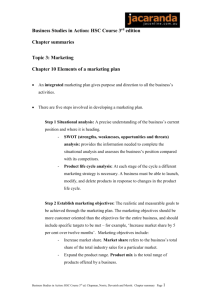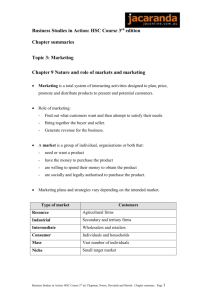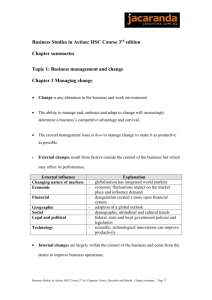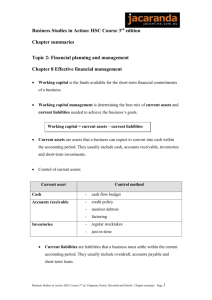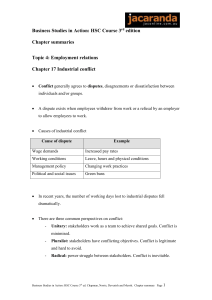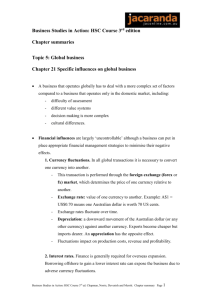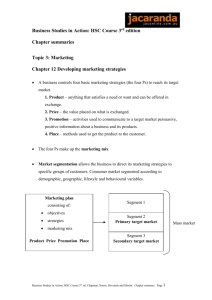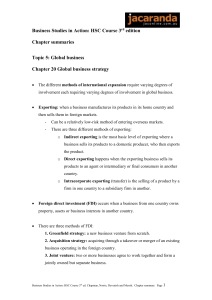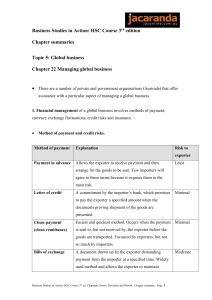Business Studies in Action: HSC Course 3rd edition
advertisement
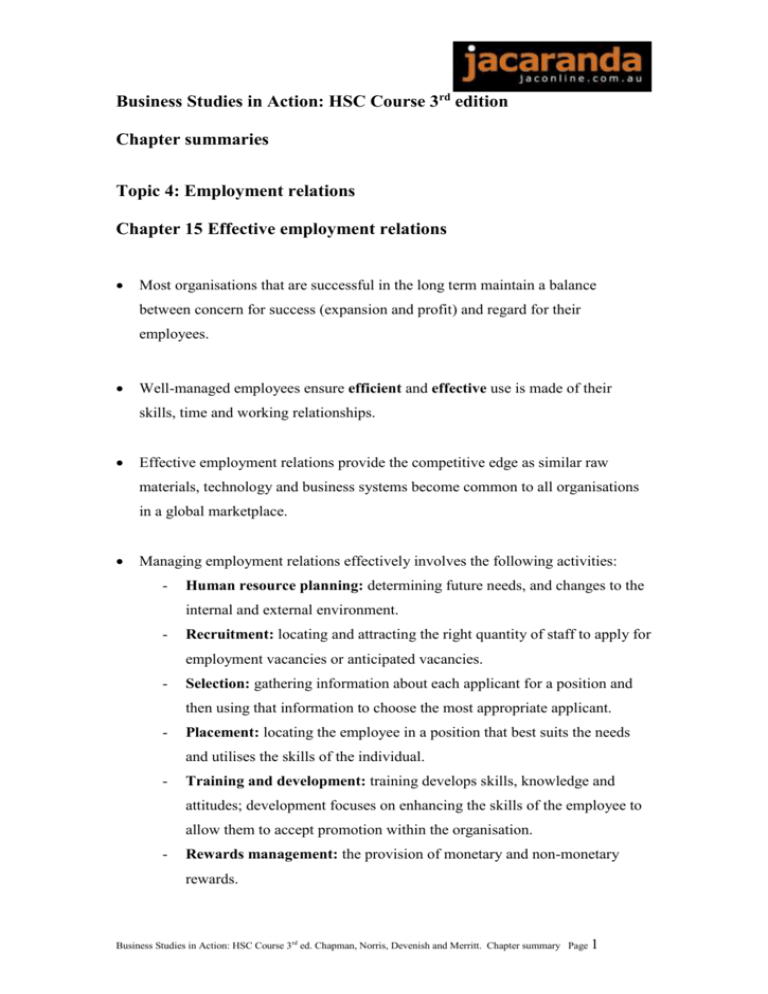
Business Studies in Action: HSC Course 3rd edition Chapter summaries Topic 4: Employment relations Chapter 15 Effective employment relations Most organisations that are successful in the long term maintain a balance between concern for success (expansion and profit) and regard for their employees. Well-managed employees ensure efficient and effective use is made of their skills, time and working relationships. Effective employment relations provide the competitive edge as similar raw materials, technology and business systems become common to all organisations in a global marketplace. Managing employment relations effectively involves the following activities: - Human resource planning: determining future needs, and changes to the internal and external environment. - Recruitment: locating and attracting the right quantity of staff to apply for employment vacancies or anticipated vacancies. - Selection: gathering information about each applicant for a position and then using that information to choose the most appropriate applicant. - Placement: locating the employee in a position that best suits the needs and utilises the skills of the individual. - Training and development: training develops skills, knowledge and attitudes; development focuses on enhancing the skills of the employee to allow them to accept promotion within the organisation. - Rewards management: the provision of monetary and non-monetary rewards. Business Studies in Action: HSC Course 3rd ed. Chapman, Norris, Devenish and Merritt. Chapter summary Page 1 - Conflict resolution: the constructive use of conflict and dispute resolution. - Legal compliance: abide by the appropriate legislation such as occupational health and safety (OH&S). - Separation: employees leaving the organisation. This needs to be handled properly to avoid claims of discrimination. Functional communication systems are vital for effective employment relations. This involves: 1. Grievance procedure: system to deal with workplace complaints. 2. Worker participation: employee involvement in decision-making. 3. Team briefings: managers and employees meet to discuss issues. Quality circles and semi-autonomous teams assist in this process. Rewards can be monetary or non-monetary, and intrinsic (sense of personal achievement) or extrinsic (rewards given outside the job itself such as incentive payment). An effective rewards management system should attract, retain and motivate employees, and be equitable. Non-monetary rewards Monetary rewards - Interesting work - Wage and salary - Challenge - Incentive bonus - Responsibility - Fringe benefits - Satisfaction - Profit sharing - Recognition - Commission Business Studies in Action: HSC Course 3rd ed. Chapman, Norris, Devenish and Merritt. Chapter summary Page 2 Effective training and development improves employee performance and productivity. An effective induction program introduces new employees to the job, their coworkers, the organisation and its culture. Ongoing training is critical due to technological change and global competition, leading many organisations to promote the concept of a ‘learning organisation’ within the business. Key features of an effective training program include: Step 1: Assess the needs (needs analysis). Step 2: Determine the objectives of the training program. Step 3: Consider the internal and external influences. Step 4: Determine the training process Step5: Evaluate the training program. Training can be formal, informal, off-the-job or on-the-job. Development assists employees to cope with added responsibility and accountability. It prepares employees for promotion. Flexible working conditions enable employees to balance work and family responsibilities. Family-friendly programs include: - childcare - family support - family leave - flexible working hours. Flexible remuneration agreements can be used as a motivational tool and tied to the achievement of key performance indicators. Agreements can include: - profit-sharing - productivity sharing. Business Studies in Action: HSC Course 3rd ed. Chapman, Norris, Devenish and Merritt. Chapter summary Page 3 Flexible working hours are a common feature of enterprise agreements and individual contracts. An employment/human relations audit can be used to evaluate the employment relations activities and their effectiveness. Quantitative measures relate the effectiveness to costs and profits. Benchmarking – comparing business performance against industry standards – can be used to achieve world’s best practice. Qualitative measures provide feedback on changes in behaviour or improved quality of service provided. Measures of effective employment relations include: 1. Level of staff turnover – the rate at which employees leave the business. 2. Absenteeism – failure to report for work without leave being approved. 3. Industrial disputes – direct employee industrial action such as strike, work ban, go-slow. High rates of these measures indicate ineffective employment relations. Business Studies in Action: HSC Course 3rd ed. Chapman, Norris, Devenish and Merritt. Chapter summary Page 4
